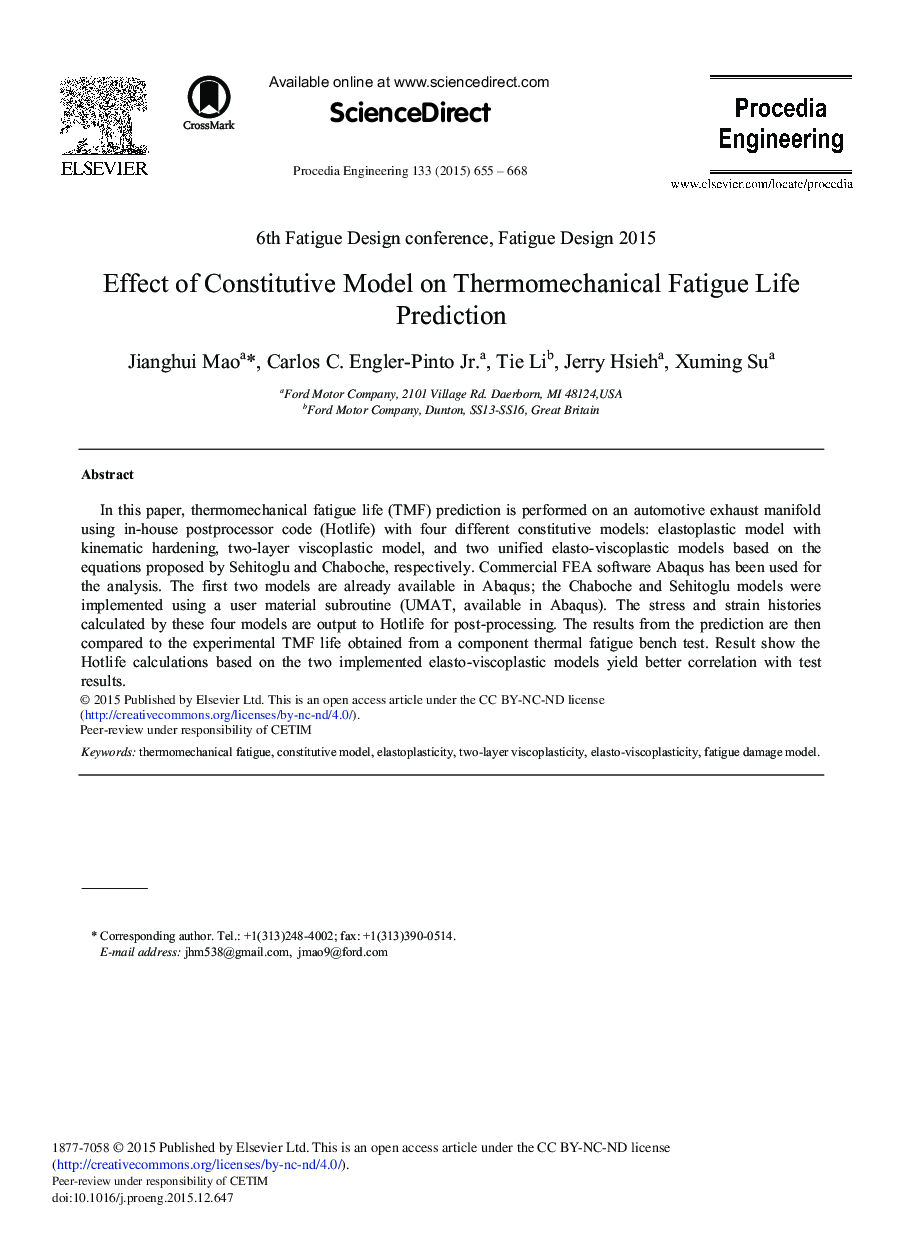| Article ID | Journal | Published Year | Pages | File Type |
|---|---|---|---|---|
| 853973 | Procedia Engineering | 2015 | 14 Pages |
In this paper, thermomechanical fatigue life (TMF) prediction is performed on an automotive exhaust manifold using in-house postprocessor code (Hotlife) with four different constitutive models: elastoplastic model with kinematic hardening, two-layer viscoplastic model, and two unified elasto-viscoplastic models based on the equations proposed by Sehitoglu and Chaboche, respectively. Commercial FEA software Abaqus has been used for the analysis. The first two models are already available in Abaqus; the Chaboche and Sehitoglu models were implemented using a user material subroutine (UMAT, available in Abaqus). The stress and strain histories calculated by these four models are output to Hotlife for post-processing. The results from the prediction are then compared to the experimental TMF life obtained from a component thermal fatigue bench test. Result show the Hotlife calculations based on the two implemented elasto-viscoplastic models yield better correlation with test results.
